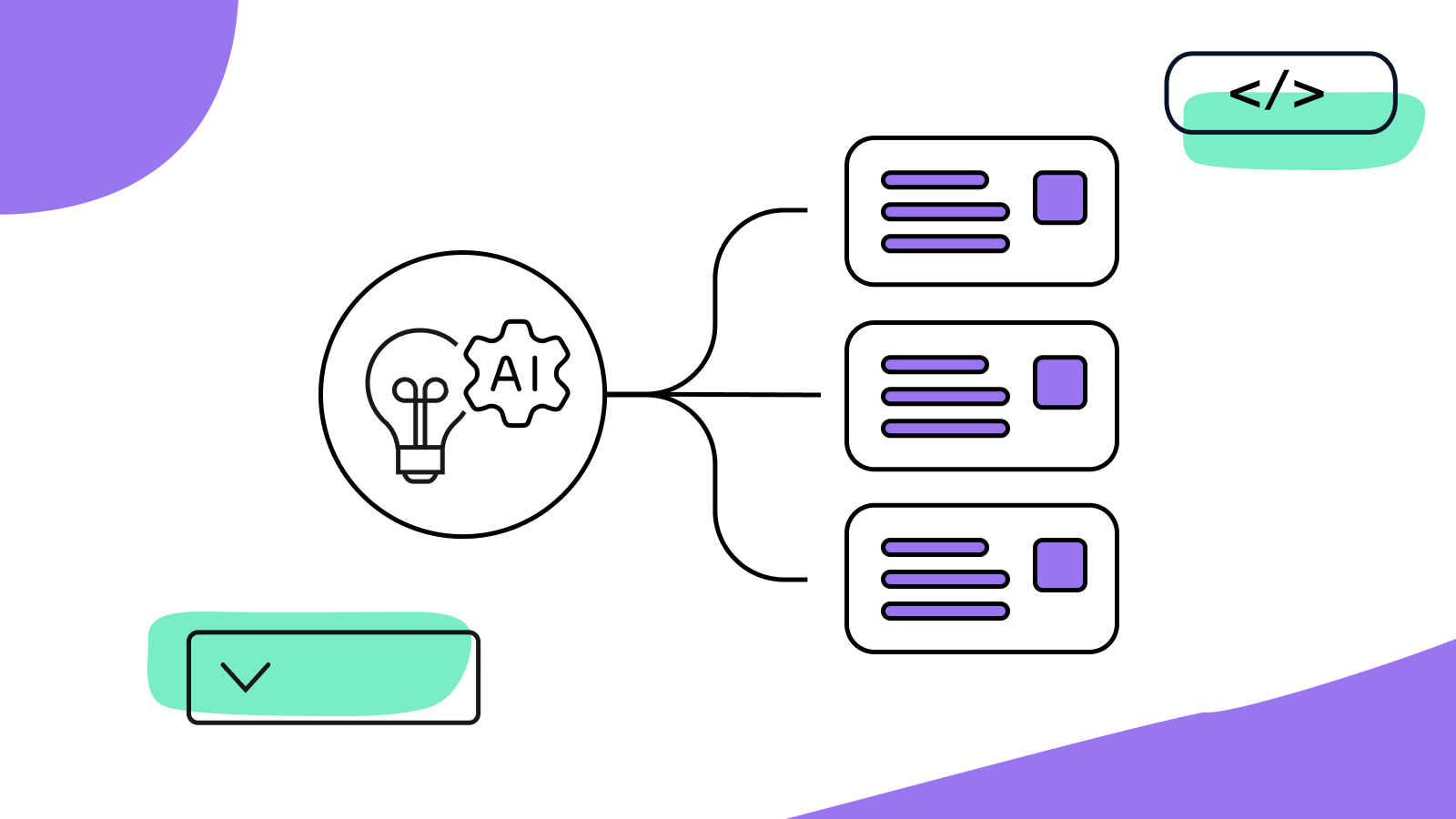This isn’t a tool just for designers or developers. It’s a multiplier for your entire product economy.
Let me begin with an outcome that seems impossible.
A cross-functional design infrastructure team of 10-15 people supporting 400 product staff - working with Knapsack’s Intelligent Product Engine (IPE), unlocks billions in business value over five years.
Not millions. Billions.
In contrast, traditional digital product organizations, similarly staffed, with strong adoption of design systems, mature tooling, and well-integrated platforms, might expect $80-125 million in efficiency and acceleration gains over the same period.
Combining great design infrastructure with an AI-integrated product delivery engine changes the economics dramatically. With the Intelligent Product Engine, we’re looking at a value generated figure climbing close to $4 billion. Not because the team is working harder, but because the system is working in an entirely different way.
It’s no longer about acceleration. It’s a fundamental shift in the economics of digital product delivery.
The old model: predictable efficiency, limited by process
In a traditional digital product infrastructure model, ROI on design systems scales linearly with money and time. A skilled team builds reusable assets and documentation. Adoption grows. Efficiency follows. You put in place the right governance and tooling, and you’ve got a winning formula.
But it’s a winning formula that’s bound by human effort and organizational inertia.
You invest $15 million in salaries and systems. You get $84 million of value in return. A solid 5x outcome. But you’re always limited by slow cycles, repeated handoffs, manual QA, and fragmented review loops. These are stages that can be optimized, but not eliminated.
Platform acceleration: higher gear, same vehicle
Advanced design system platforms, like Knapsack, compress product creation and delivery timelines.
By bringing together documentation, design sources, and code into one place, you onboard faster, design faster, ship faster. Practice expertise and high-quality tooling support means you reach maturity in months, rather than years.
This might take you from $84 million to $125 million. It’s real acceleration. But it’s still the same game.
It’s the pursuit of efficiency, not reinvention. We’re still just breeding faster horses, not creating a car.
The Intelligent Product Engine is playing a different game
The Intelligent Product Engine doesn’t just compress cycles. It collapses them entirely.
- Creating design artifacts goes from 10 days to 2 days. You might not even work in canvas tools like Figma at all, because the IPE is generating variants that reflect both product intent, and brand and design direction.
- Dev implementation from 3 weeks to 2 days.
- QA and integration might take only a few hours.
Work that used to take months of back-and-forth now takes less than a week.
Weekly cadence = strategic agility
You don’t ship quarterly anymore. You ship weekly. You’re not just faster. You’re more responsive.
Weekly release cycles mean:
- 13x more chances to learn - improving market fit
- 13x more opportunities to test - reducing user friction
- 13x more points of value creation - increasing conversion rates
But, perhaps more importantly, we’re changing the nature of the work. We are no longer handing off mockups and specs. We are working as true cross-functional teams, collaborating in real-time with an AI engine to generate production-grade output from product intent, contextualized design constraints, and live data.
Design systems don’t go away. They become more than a deliverable, they become vital inputs for generation and innovation.
This isn’t just the velocity of delivery. It’s using that velocity to compound momentum in other areas, too.
Velocity feeding learning? That’s strategy.
Exponential ROI isn’t just about those $ billions
Under traditional models a team of 400 product staff might drive around $250-300 million in overall value. The Intelligent Product Engine pushes that number into the billions, on a pure ROI multiplier. But this isn’t really about watching a number grow. This isn’t about scaling what already works.
It’s unlocking an entirely new field of strategic capabilities.
- Interfaces tailored to individual user personas
- Product forks you can serve to specific segments, at no additional engineering cost
- Economically viable long-tail customers
- Test entire markets with minimal effort
- Distribute and accelerate decision-making through AI-assistive tooling
You’re freeing up employees to truly create, and differentiate through human excellence
With traditional tooling and workflows, these are ideas that tend to die in the planning stage. With IPE-driven levels of efficiency, they’re a routine experiment.
This ROI isn’t just based on doing more of the same thing, but faster. It’s about doing entirely new things that you couldn’t justify before.
A new paradigm for user interfaces
If your delivery engine is moving this fast, the idea of single, static, UIs doesn’t make as much sense.
Your design language, brand guidelines and constraints all still matter. But now you can use them to power dynamic compositions - interfaces that are morphing by persona, location, role, or behavior.
- An enterprise admin sees one interface. An individual contributor another. Tailored to role, behavior, and context
- Retail buyers in Tokyo get a different flow than a researcher in Berlin
- A returning user re-enters the product with context and a streamlined UI
Your design system isn’t just a tool that reduces duplicate work. It becomes the governance model for that dynamic difference. That means it’s a foundation for spawning personalized, governed, production-ready interfaces on demand.
We’ve grown used to personalization on the context level. This is personalization on the interface level, in real time.
An investment shift
Yes, the IPE requires investment. But the payback is measured in months, not years.
And once you hit break-even, every incremental dollar returns value on an order-of-magnitude. Not through the greater efficiency of labor, through strategic leverage.
If you’re serious about being innovative, this then becomes a really simple calculus.
The IPE means the cost to try anything drops.
Therefore, the cost of not trying becomes unacceptable.
The bottom line
Most companies and teams are still optimizing their existing digital delivery. Polishing every step along the way from idea to execution.
Which opens up an opportunity for a new class of organizations. Ones that are moving past simply delivering faster, to delivering differently.
- Not just more efficient teams
- Entirely new interface models
- Entirely new product strategies
- Entirely new economics
- Democratized product delivery
It’s not a 10% improvement.
It’s a different business model.
We’re not playing the same game. There’s a new rulebook. And the clock is already ticking.
**This article was first published by Robin Cannon on Linkedin Pulse, October 8, 2025 and has been republished with his permission.



.png)